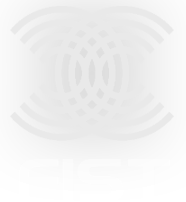Time:3:00pm, 4/8/2014
Place:A306, 1 West Building
Speaker:Dr. Yuan ZHANG, University of California, U. S. A.
Title:Charge transport and interfacial engineering for solution-processed organic optoelectronics
Abstract of Talk:
Conjugated polymers (CPs) are attractive materials which promise applications in energy conversion devices, large-area displays, and plastic electronics with low-cost fabrication. The functionalities and efficiencies of organic optoelectronics based on CPs are primarily dictated by the charge transport properties.
Molecular doping is a powerful strategy in mediating the charge transport in solution-processed CPs. By virtue of p-type doping, the hole mobility of CPs is enhanced with the background hole density controllable by doping levels. This allows for precisely control over the charge injection barrier to the semiconductor. By using a carrier-density dependent mobility model, one obtains a thorough description of the hole transport and temperature dependence in CPs upon doping. In contrast to the hole transport, electron transport in many CPs is trap-limited, giving rise to severe problems in related device applications. With molecular n-type doping, traps are deactivated, leading to trap-free and balanced electron and hole transport in organic diodes. Molecular doping has been strategically applied for polymer bulk heterojunction photovoltaics (BHJ-PVs), bilayer light-emitting diodes and transistors, showing universal application in realizing improved device performance.
In the second part of the talk, charge transport and recombination in organic solar cells based on solution-processed CPs and small molecules (SM) will be discussed. The recombination rate coefficient of SM BHJ-PVs exhibits stronger carrier density dependences than that of polymer P3HT:PCBM cells. These results enable in-depth understandings of the carrier losses and the irradiation intensity dependence of the BHJ-PV efficiency.
In the final part, strategies using DNA layers to tackle charge injection barriers in organic optoelectronics will be discussed. The key functionalities and mechanisms of the DNA layer are related to an interfacial dipole interaction. Latest results in applications of interfacial engineering using DNA layers in organic BHJ-PVs will be discussed.
Invited by:Ju LI, MPC

